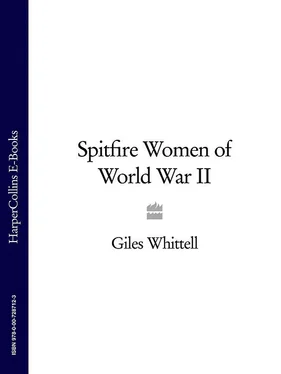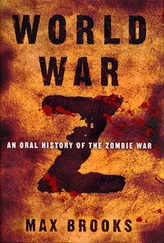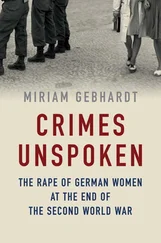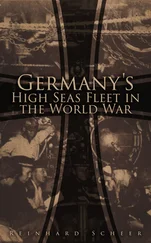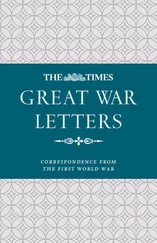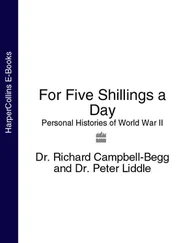And this was why, towards the end of April 1942 (and four months after Pearl Harbor) two young women in ATA uniform set off from London for Liverpool docks to meet a converted coal carrier called the Beaver Hill . These women were Pauline Gower and the Hon. Mrs Kitty Farrer. Gower, the high-achieving daughter of Sir Robert Gower, MP for Gillingham, had been appointed head of the women’s section of the ATA in September 1939. Farrer was her adjutant. The ship they were meeting had had a rough and dangerous crossing from Montreal. The last convoy to have sailed this route had lost six of its ten vessels to U-boats, but the Beaver Hill somehow made it through both the German blockade and a ferocious three-day storm. On it were five unusual guests of the British government – the first five of twenty-five American women pilots to cross the Atlantic that year to join the ATA.
They cannot have been hard to pick out on the gangplank. In the tide of over a million Americans who came ashore at Liverpool to help Churchill reverse the catastrophe of Nazism only a few handfuls were women. Even so, Commander Gower and Executive Officer Farrer did not get to them first. As the ship’s passengers disembarked, the Englishwomen were dismayed to see the captain and crew, formed up in a ragged line at the end of the gang-plank, surround their charges and smother them in what appeared to be drunken kisses. ‘They grabbed each one of us and hugged us and kissed us on both cheeks,’ one of those women remembered. ‘Pauline Gower was so prim, I can just imagine her thinking, “Oh my god, what are these Americans doing?”’
Miss Gower and Mrs Farrer waited for the raucousness to end. Then they stepped forward to shake hands. By their own account they invited their visitors to dinner at the nearby Adelphi Hotel, and the new arrivals appeared to accept. In fact the Americans were exhausted and went off to sleep. Not one of them showed up at the appointed time, leaving Gower and Farrer to dine alone at a table for seven. They were so affronted that they left on the night train and suggested their American ‘cousins’ make their own way to London in the morning.
That suited Dorothy Furey perfectly.
Furey was the bewitching, violet-eyed daughter of a New Orleans banana importer, and she had already decided that Pauline Gower was uptight. Her father had lost a large fortune in the crash of 1929, and since then she had gained wide experience of the susceptibilities of men. She had also nearly killed herself looping over Lake Ponchartrain in an open cockpit Arrowsport biplane. She was twenty-four when the Beaver Hill docked in Liverpool, and the only one of the five women in her group to have packed an evening gown with her flying gear. She called it her Gone With The Wind dress. It was red and not especially long, and she would use it to spectacular effect before the war was out. Some of the other Americans called her the seductress. Not all were proud of her. For her own part, when Furey looked back on her fellow women pilots at the end of her life she stated quietly: ‘There wasn’t anybody to compare with me.’
Not that her hosts were quick to notice. On arriving in London, Furey and company were escorted directly to a meeting room near the Grosvenor House Hotel and made to listen to a schoolmasterly talk by Pop d’Erlanger on ‘ill-mannered Americans’ and how not to be counted among them. Pop was popular, especially among his peers in the British boardroom class, but he irritated Furey no end.
‘They called him the man with the runways on his shoulder because we all had stripes but he had gold, like an admiral,’ she remembered. ‘And he greeted us with a lecture on ill-mannered Americans. Yes he did. Because they had had some young men who had come over to help and they had, I guess, got drunk and behaved badly. So that was our greeting. I was so furious I nearly got up and walked out, except I didn’t know where I was or where I would go.’
In the event the five Americans were taken to Austin Reed’s on Regent Street to be measured for their uniforms. From there they went to Paddington to catch the train to White Waltham, thirty miles to the west. It was a journey that would become as familiar as ration coupons over the next three years, but it must have seemed unutterably strange that first time – to be trapped in the gaze of English fellow-passengers too war weary and curious to lower their eyes, to stare out at suburbs vast enough to swallow whole a New York borough, and then at ‘countryside’ too thick with roads and villages to count as countryside except on such a crowded island, as the aerodrome that was to be their gateway to a new life of heroic and unprecedented flying clanked closer by the minute.
Cars met the Americans at Maidenhead station. From here they were ferried to ATA headquarters, a flat-roofed, two-storey brick building next to the operations room. As the new arrivals clambered out they realised at once that the aerodrome’s entire male pilot contingent had downed tools to size them up. Faces filled every window; they made a peculiar reception committee. Its members included the gruff and jowly Norman Shelley, an actor who would disappear without explanation for days at a time for what turned out to be stints impersonating Winston Churchill on the radio during the Prime Minister’s secret absences abroad. There were also no fewer than three fully functioning one-armed pilots based there, among them the terrifying Stewart Keith-Jopp, Betty’s uncle, who was also missing an eye. (‘I was told he lost the arm on a bombing run in World War One,’ Betty told me, miming the awkward business of hand-delivering high explosives from the cockpit of a Sopwith Camel. ‘Apparently it went off in his hand, but he never talked about it.’)
The other one-armed men were First Officer R. A. Corrie and the Honourable Charles Dutton, later Lord Sherborne, who was once interrupted by a woman pilot in the White Waltham common room arguing over which arm it was better for a pilot to be without. The answer was not clear, but Dutton did explain that he could take off in a Spitfire only with the control column clenched between his legs. And he could land only with the throttle pulled right back in advance. Every landing was effectively a forced one, with no second chances.
The most discerning judge of the new arrivals was probably Dr Arthur ‘Doc’ Barbour, White Waltham’s chief medic. Barbour was Scottish, single, dedicated to his pilots’ welfare and ‘perfect for the ATA’, according to a colleague who knew him well. He also had a fondness for grainy 16-mm ‘adult films’ that might have got him into trouble in another age, and he insisted that all new pilots, male or female, present themselves unclothed for their medical examinations. Barbour saw no reason to make an exception for the Americans on account of their gender or their nationality. In fact he seems to have relished forcing the issue, which is why one of the first orders given to the women of the Beaver Hill by their new employer was to strip. But by this time they had been joined in London by a mercurial millionairess from Manhattan’s Upper East Side who considered herself their guardian angel – and she was having none of it.
Jacqueline Odlum Cochran, born Bessie Lee Pitman, had first delivered herself to Britain at the controls of a twin-engined Lock-heed Hudson bomber the previous summer. Her many British critics called the trip a publicity stunt, which it was. Publicity had served Cochran well on her journey from shoeless orphan to cosmetics millionairess and daredevil air racer, and she was addicted to it. She was also married to an industrialist who was a friend of President and Mrs Roosevelt and a dependable donor to their Democratic Party. They in turn supported her idea of drawing attention to the work being done by women pilots in war-ravaged Britain. Hence the night crossing from Gander, Newfoundland, to Carlisle and on to Prestwick; nineteen hours in all, which she survived despite acts of sabotage by mutinous ground crews and mysterious tracer bullets fired up at her from the middle of the Atlantic.
Читать дальше
